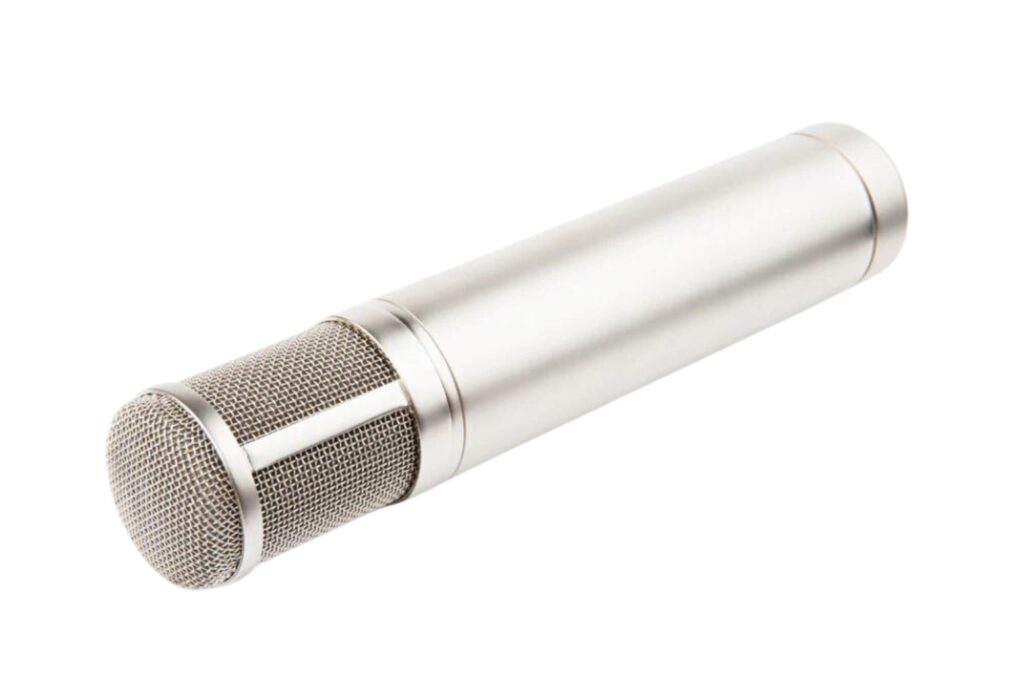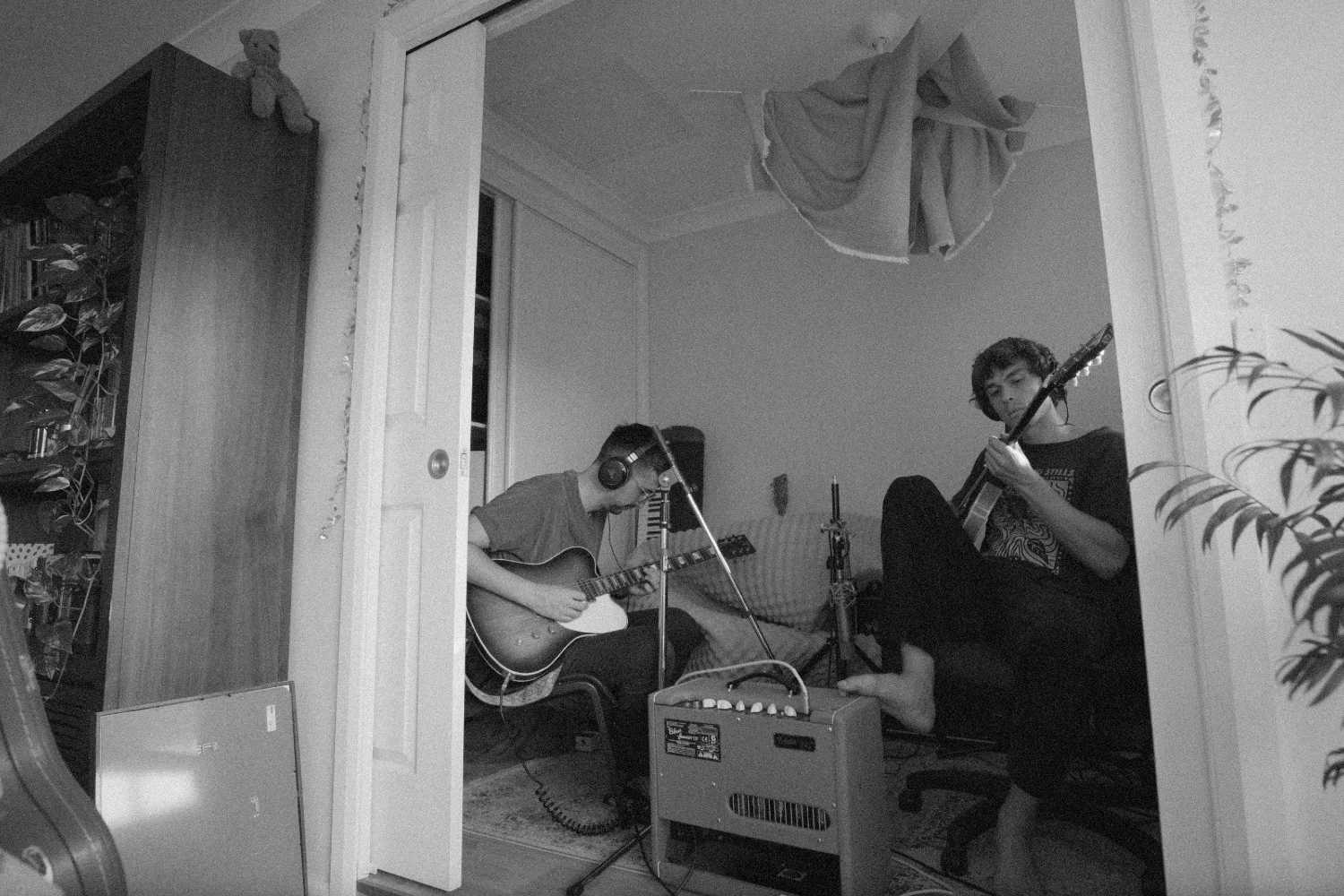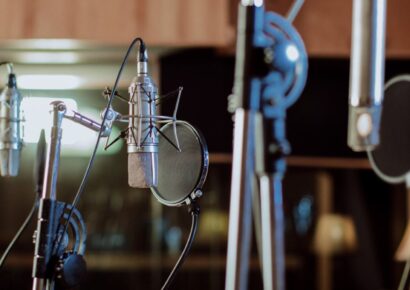"Act of Disappearing" represents their most audacious and fully realised creation to date, a musical journey replete with opulent synths and rousing, crowd-pleasing choruses reminiscent of the golden era of bands like The Verve and The Strokes.
Act of Disappearing, the inaugural album by Winterbourne, presents a 12-track masterpiece of electrifying, anthemic indie-rock. This album emerges after the dedicated efforts of James Draper and Jordan Brady, lifelong friends and artistic collaborators, who dedicated years to refining their skills both in the studio and on stage. Hot off of this career defining release, the band sat down with us to chat workflow, inspiration and go-to gear.
Read all the latest features, columns and more here.
To start things off, I’d love to ask whether you made a conscious effort to expand your sound when approaching the writing and production of this new album – what kind of sonic/thematic palette you were working from?
We never really seem to make conscious decisions about the sound of our music to be honest. It’s more like waiting to see which sounds and ideas inspire us enough that we end up turning them into songs. We’ve always thought the most exciting thing to hear from an artist is something unquestionably new and exciting but at the same time familiar, so I think we apply that to our stuff subconsciously as we go.
Tell me about your songwriting process – is it a collaborative affair, do you tend to tinker alone and build from those skeletons, or is it a combination of both?
It’s definitely a combination. Most of the time I write and demo a song at mine and send it to Jordan for his thoughts and changes but other times we’ll just be jamming and waiting for ideas to show up. When we got to a point last year where we knew we were actually making this record, we rented a cottage with our band and spent a week jamming and writing. Three of the songs on this album were written that week and some of the stuff we recorded remains on the finished product.
Talk me through your recording workflow from demo to track completion. Do you begin in the bedroom or head straight to the studio? Any preference of DAW/special or demo setup that goes the extra mile?
That’s something that’s been quite different this time around. We’ve always loved making demos and we’ve never been ones to leave a song as a voice memo or scratch recording. If we’re excited about a song we’ll add all the production as we hear it. And so previously we’d live with these full yet poorly recorded demos and then eventually head to the studio and start every recording from scratch. This time around though we wanted to see if we could see the songs all the way through.
We had sent the demo for “Long Distance Runner” to our friend and collaborator Jackson Barclay, who said something along the lines of ‘that’s great, it should sound like that’, which was enough of a confidence boost to decide that we could produce the whole album. Jackson, Jordan and I then spent the next 2 years bouncing Pro Tools sessions between one another, doing stints at various studios to re-record parts or get live band takes for songs, adding vocals here and there, getting rough mixes and deciding to re-track bass parts, spending hours on synth sounds and automation in our home studio, deciding that entire recordings were shit and starting again… until eventually we had 12 songs that we were happy with. It was a whole new experience for us and we absolutely loved it.
Which pieces of equipment are the most integral to you when it comes to translating your project’s essence from a recorded to a live context? Are you trying to replicate your studio sound when you perform, or do you prefer to let the songs breathe and find their own live groove? How do you work to bring it all to life?
We have multiple live set ups and so the approach changes based on that. We have a duo format, a trio, a four-piece and a five-piece band set up depending on the size of budget. And stage …
We find that if we start from a place where we’re trying to replicate the recordings as accurately as possible the songs end up taking on their own life in a live setting anyway, so we just let that happen. We don’t play to track or click very often on stage so the songs are slightly different every time. When it’s just the two of us Jordan plays the drums with his feet, so that naturally changes the songs from their recorded version. We use samples from the recordings to emulate the actual sounds on the album though, which is fun. The most common set-up we use is the 4-piece, but even with 4 of us we only have so many hands, so we make sure we get the songs to a point where the energy of the recording is there, even if all the instrumentation isn’t.
Are there any pieces of gear you’ve acquired, be it something cheap that punches massively above its weight, or a less-wallet friendly splurge, that have tangibly influenced the way you write and record music to this day?
The only thing we’ve ever really spent money on is instruments. We have this Maton acoustic which Jordan got when he was about 16, it’s got several holes in it and drawings all across the top. It was our main guitar when we were busking but kind of went unused for a good 5 years and then suddenly re-emerged for this album. There’s also this 12-string that I got around the same time that we barely ever used. A couple of years ago Jordan took all the low octaves off it so now it’s in Nashville tuning and sounds magical. It’s not expensive, but when you play something on it it sounds completely different. That’s been a huge part of the sound of this album. I think it’s on every song on the album except for two.

What are the visual mediums that you find best allow you to express yourself as an artist outside of music – is it important for you to be able to display your creativity in every aspect of this project’s output?
It seems that way. We definitely seem to take any excuse to make something and that’s become more and more of an addiction as we’ve gone along i’d say. The artwork of an album is something we care about a lot. It’s always struck us as strange to spend years making music and then maybe a day or two at a photoshoot or in photoshop making the thing that is going to represent it visually forever. For our first album we decided to build a physical artwork and take a picture of it. We loved the process and the finished product and it felt like a more honest representation of what we’d made, so we knew we were going to do that again this time. Like I said before, we had a pretty good idea of what we wanted it to be this time, at least we knew it needed to be red and yellow. We were kind of dreading making it by the end because we’d put too much pressure on ourselves. It forces you to learn new skills though and you start to see that whatever that thing is that pulls you into making music is there in other forms as well, if you go looking.
Mics:
Nude C12
Most of our vocals were tracked at our studio on the NUDE C12 clone which sounds great. There were a couple of songs we felt we needed something different and ended up borrowing a Rode Classic II for a week, which goes great with our often pokey vocals.

Guitars:
Maton FBG808L
Artist HG39303 Nylon String
16-something Gibson J45
Cort MR710F 12 String (with only the high octaves)
T-Guitars Model No.9
Washburn HB15C Hollow Body Electric
Epiphone Sorrento Reissue
Hagstrom Viking Bass
Fender Mustang Bass
Amps:
VoxAC15HTV Handwired
Synths and Keys:
Juno60 and Juno 106 (Borrowed from our producer friend Andy)
Farfisa (We never found a real one, we used the Arturia plug in and re amped it through my vintage record player at home to give it the goodness. Still not as cool though)
Mellotron (same deal)
Wurlitzer (Real one this time)
Hammond (Real and amped through the Leslie. Was amazing)
Keep up with Winterbourne here.

